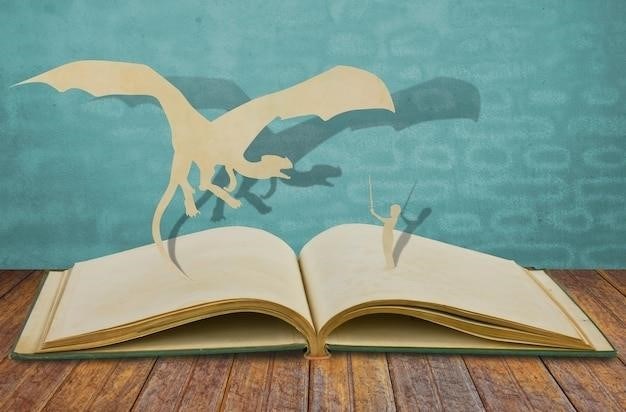The Quest for the Oldest Book⁚ Defining “Book”
Defining what constitutes a “book” is crucial in this quest. Consider both the physical medium—clay tablets, papyrus scrolls, or bound pages—and the content itself—narrative, instruction, or record-keeping. The evolution of the book format significantly impacts dating efforts.
Defining a “Book”⁚ Material and Content
The definition of a “book” significantly influences the search for the oldest example. Early forms of writing utilized diverse materials. Clay tablets, prevalent in ancient Mesopotamia, served as durable writing surfaces, preserving records and narratives. Papyrus scrolls, favored in ancient Egypt and the Mediterranean world, offered a more portable and flexible writing medium. These scrolls, often composed of multiple sheets glued together, could reach considerable lengths, containing extensive texts. The Etruscan gold book, a remarkable example of early multi-page books, is a testament to the ingenuity of ancient bookmaking. Its use of gold sheets, bound together with rings, highlights the value placed on preserving knowledge and artistic expression. The materials used dictated not only the book’s physical form but also its longevity and susceptibility to damage over time. The content itself also plays a role in determining what constitutes a “book.” While narratives and religious texts are commonly considered, lists of accounts, legal documents, and other forms of written record also fulfill the criteria.
Early Forms of Writing and Their Limitations
Early writing systems, while groundbreaking, possessed inherent limitations affecting their survival and interpretation. Clay tablets, while durable, were bulky and fragile, susceptible to breakage and damage from environmental factors. Their production was also time-consuming, limiting the creation of extensive works. Papyrus scrolls, though lighter and more portable, were vulnerable to decay and damage from moisture, insects, and time. Their fragile nature has resulted in the loss of countless ancient texts. Furthermore, the early writing systems themselves often lacked standardization, making deciphering and interpretation challenging for modern scholars. Different scripts, variations in symbols, and the absence of consistent grammatical structures can create significant obstacles in understanding the original content. The materials’ perishability and the complexities of early writing systems present considerable hurdles in determining the true age and content of ancient texts, highlighting the challenges in identifying the oldest book.
The Challenges of Dating Ancient Texts
Accurately dating ancient texts presents numerous challenges for researchers. The degradation of organic materials like papyrus and parchment makes radiocarbon dating unreliable for many ancient documents. While useful for organic components, it may not reflect the creation date of the complete work. Determining a text’s age often relies on indirect methods, such as paleography (the study of ancient writing), which analyzes the style and characteristics of the script. This can be subjective and prone to error. Furthermore, the context of discovery plays a significant role. A text unearthed in a well-preserved tomb might be much better preserved than one discovered in a less stable environment. The lack of consistent record-keeping in ancient societies also complicates dating. Without precise creation dates recorded on the artifacts themselves, researchers must rely on contextual clues and comparative analysis with other texts and artifacts from similar periods. These combined factors make pinpointing the age of ancient texts an intricate and often imprecise process.

Contenders for the Title of Oldest Book
Several ancient texts vie for the title of “oldest book,” each possessing unique characteristics and historical significance. Determining the true winner depends heavily on the definition of “book” itself.
The Etruscan Gold Book⁚ A Multi-Page Marvel
The Etruscan Gold Book, dating back to approximately 660 BC, is a compelling contender for the title of the world’s oldest multi-page book. This remarkable artifact, estimated to be 2,673 years old, consists of six meticulously crafted sheets of 24-carat gold. These sheets, measuring 5 centimeters in length and 4.5 centimeters in width, are ingeniously bound together using gold rings, showcasing a sophisticated level of craftsmanship for its time; The book’s contents feature intriguing Etruscan characters, adding to its historical and linguistic importance. Depictions of a horse, a horseman, a siren, a lyre, and soldiers further enrich the narrative and artistic value of this ancient treasure. The Etruscan Gold Book’s discovery and analysis have significantly impacted our understanding of early bookmaking techniques and the artistic expressions of the Etruscan civilization. Its survival through millennia underscores the durability and preciousness of this unique artifact.
The Diamond Sutra⁚ A Buddhist Classic
Frequently cited as a strong contender for the oldest complete printed book, the Diamond Sutra holds a prominent place in the history of printing and Buddhist literature. Dating back to 868 CE, this meticulously preserved text is a testament to early printing techniques. Its discovery in a sealed cave in Dunhuang, China, has revealed much about early Buddhist practices and the dissemination of religious texts. The Diamond Sutra is not just a significant historical artifact; it is a revered Buddhist text containing profound teachings on enlightenment and the nature of reality. Its intricate printing, using woodblocks, showcases the advanced craftsmanship of the time and its preservation over centuries underscores the importance of this religious classic. The Diamond Sutra’s existence challenges the conventional understanding of “oldest book,” highlighting the complexities of defining such a title given the variety of early writing and printing methods across different cultures and time periods. Its continued study offers invaluable insight into both religious and technological history.
Other Ancient Texts and Their Significance
Beyond the prominent contenders, numerous other ancient texts offer valuable insights into the past. The Dead Sea Scrolls, for instance, provide invaluable information about early Judaism and the development of religious thought. Ancient Egyptian papyri, often containing administrative records or literary works, shed light on daily life and societal structures in ancient Egypt. Mesopotamian clay tablets, written in cuneiform script, preserve legal codes, epic poems, and astronomical observations, demonstrating the sophistication of early Mesopotamian civilization. These diverse texts, though not always fitting the strict definition of a “book,” represent crucial historical documents. Their significance lies not only in their age but also in the unique perspectives they offer on diverse cultures, belief systems, and societal development. Collectively, these artifacts enrich our understanding of human history and the evolution of written communication. Access to digitized versions of many of these texts allows for broader scholarly investigation and public engagement.

Accessing and Exploring Ancient Texts
Digital libraries and online resources offer unprecedented access to ancient texts. Preservation efforts are crucial, yet challenges remain. Scholarly research continues to illuminate the meaning and significance of these historical documents.
Online Resources and Digital Libraries
The digital age has revolutionized access to historical documents, including potential candidates for the title of “oldest book.” Websites like the Internet Archive provide vast collections of digitized books, manuscripts, and other materials, many of which are in the public domain. These online repositories are invaluable resources for researchers and enthusiasts alike, offering a convenient way to examine ancient texts without the need for physical travel to archives or libraries around the world. Project Gutenberg, another significant online resource, focuses on making classic literature available for free download and online reading. These digital libraries represent a monumental effort to preserve and share cultural heritage. The ability to search and filter these extensive digital collections allows researchers to refine their searches and focus on specific time periods, languages, or subject matter, greatly accelerating the research process. Furthermore, many universities and research institutions maintain their own online digital archives, often specializing in specific fields or regions. These resources offer a wealth of information and contribute to the ongoing effort to uncover and understand humanity’s literary past.
Preservation Efforts and Challenges
Preserving ancient texts presents significant challenges. Fragile materials like papyrus and parchment are susceptible to deterioration from age, environmental factors, and even the handling process. Many ancient books exist only in fragments, making reconstruction and interpretation difficult and painstaking tasks. Furthermore, the very act of preservation can introduce new problems, as some conservation methods may inadvertently damage the original material. Climate control and proper storage are crucial for slowing the decay process. Digitalization offers a powerful tool for preservation, creating accessible backups and reducing reliance on fragile originals. However, the cost and technical expertise needed for high-quality digitalization remain considerable hurdles. Moreover, ensuring long-term accessibility of digital archives requires ongoing maintenance and technological adaptation, a commitment that demands significant financial and logistical resources. The ongoing efforts to preserve ancient texts are a testament to the importance of safeguarding cultural heritage, but the challenges are immense and require a multi-faceted, sustained commitment from researchers, institutions, and governments worldwide.
The Role of Research and Scholarship
Research and scholarship are fundamental to understanding ancient texts. Scholars meticulously examine physical characteristics, employing techniques like paleography (the study of ancient writing) and codicology (the study of manuscripts). Linguistic analysis is crucial for deciphering languages and interpreting the meaning of texts. Historical context is equally important, requiring researchers to delve into archaeological evidence, related literary works, and societal structures of the time period. Interdisciplinary collaboration is key, often bringing together expertise from fields like history, archaeology, linguistics, and material science. The process of authentication, which verifies the age and authenticity of a text, is rigorous and demanding. Advanced imaging techniques, such as multispectral imaging, can reveal hidden text or features that are not visible to the naked eye. Disseminating research findings through publications, conferences, and online databases is essential for ensuring broader access and collaboration within the scholarly community. This ongoing scholarly work is not only about identifying the “oldest book” but also about understanding the evolution of written communication and its impact on human civilization.


